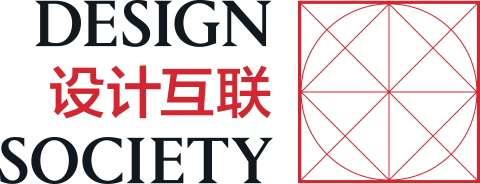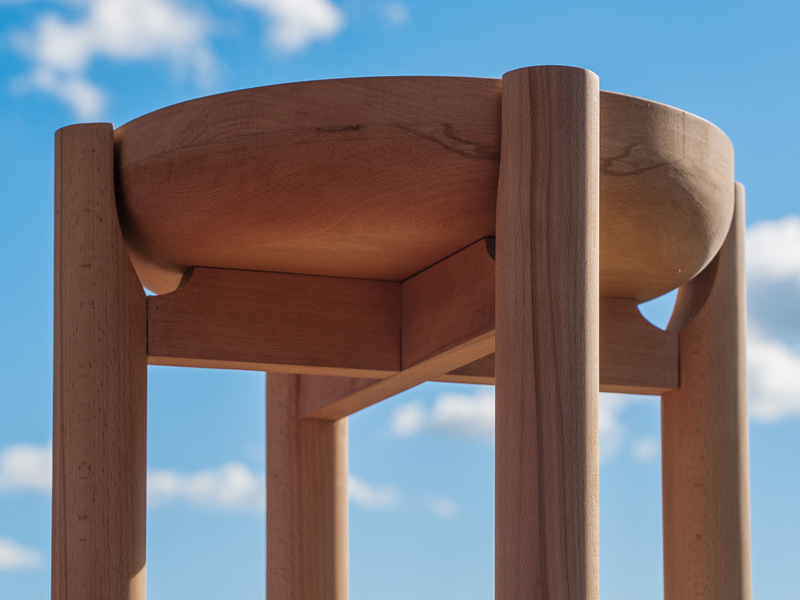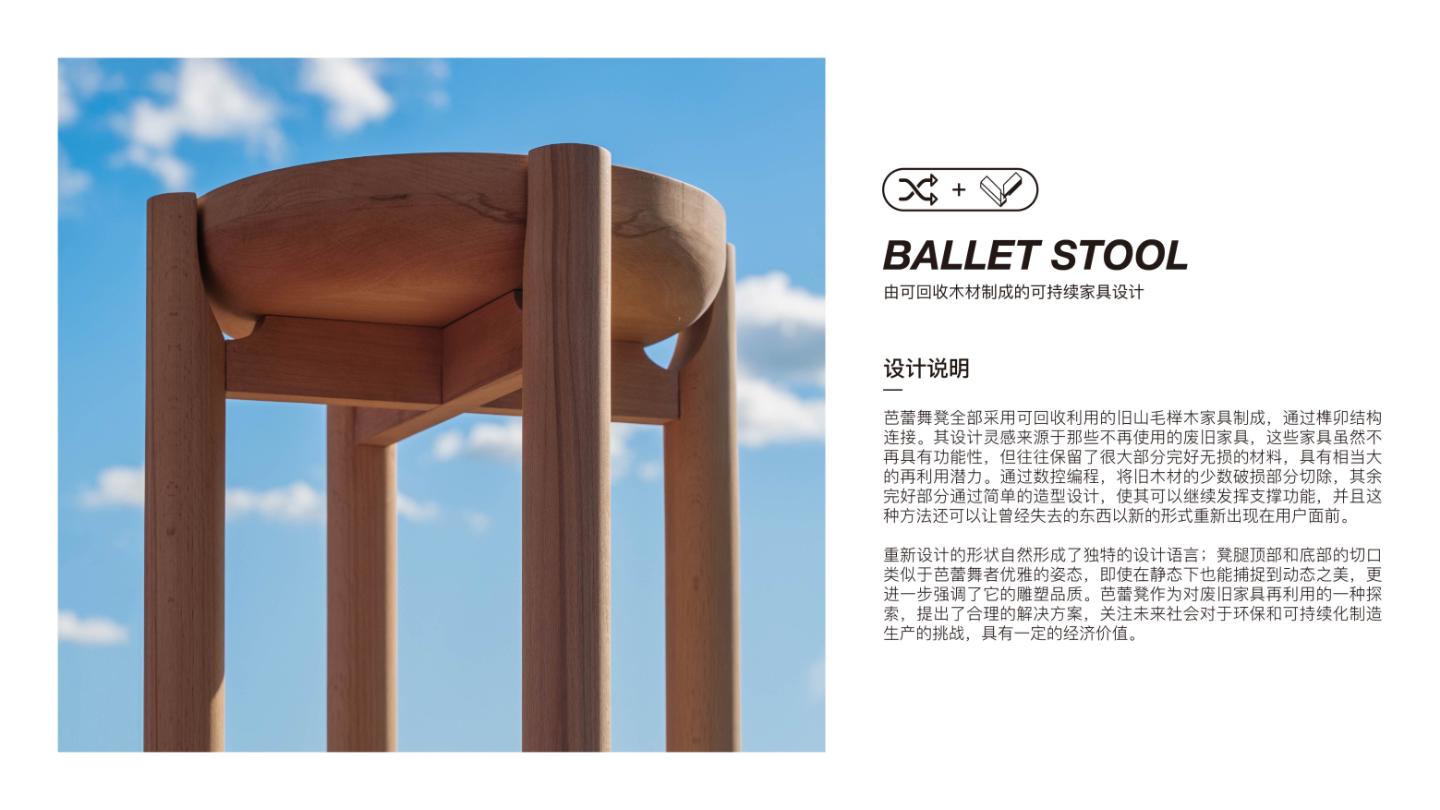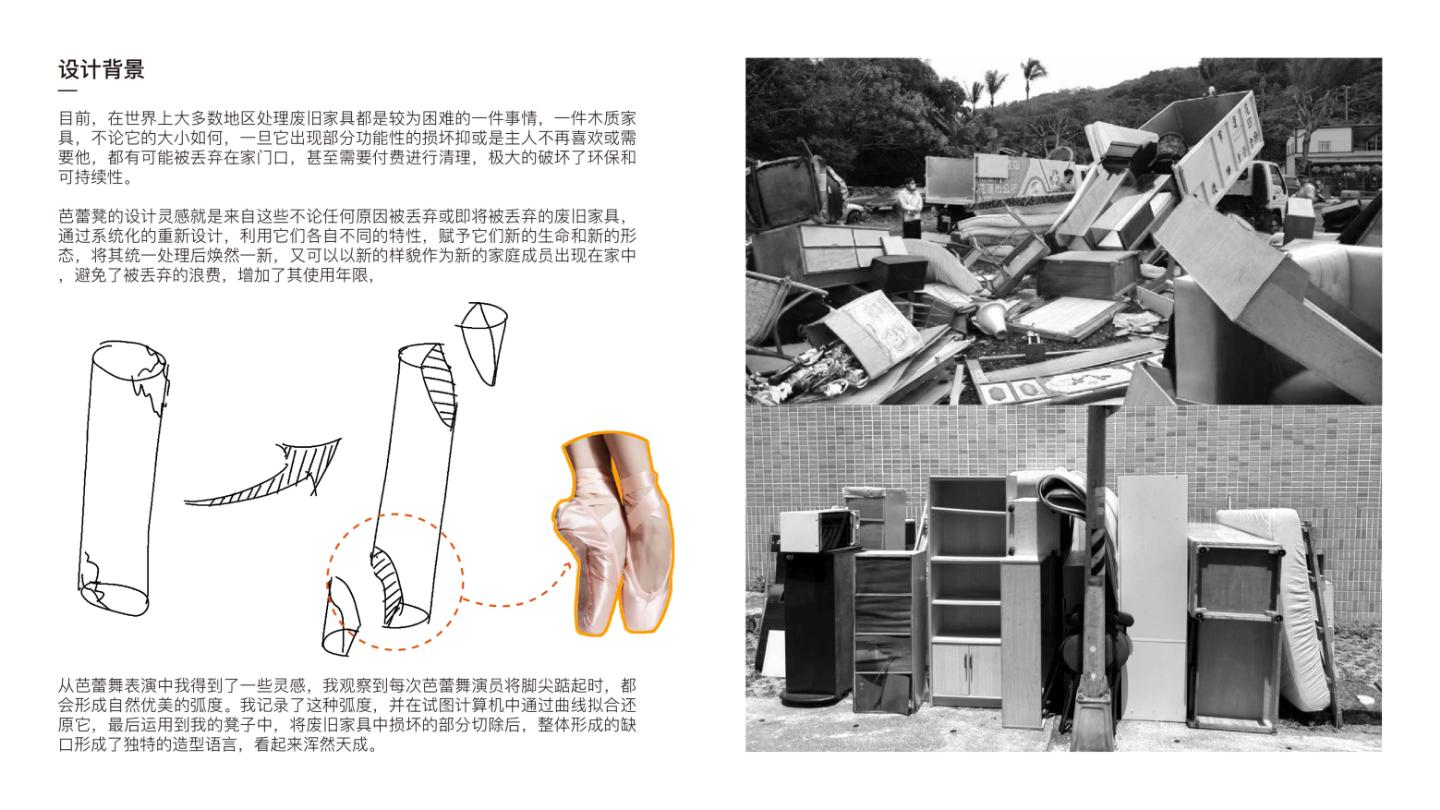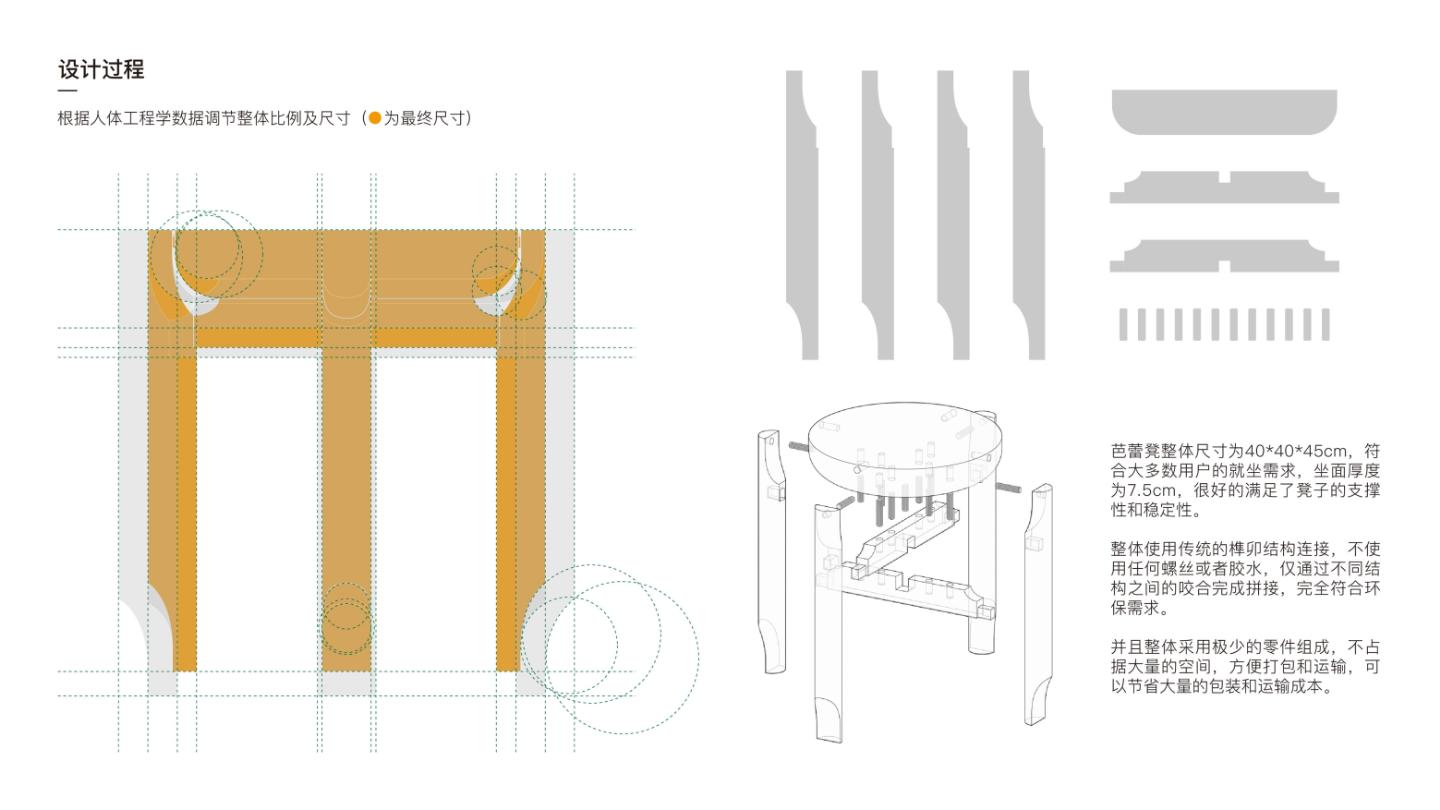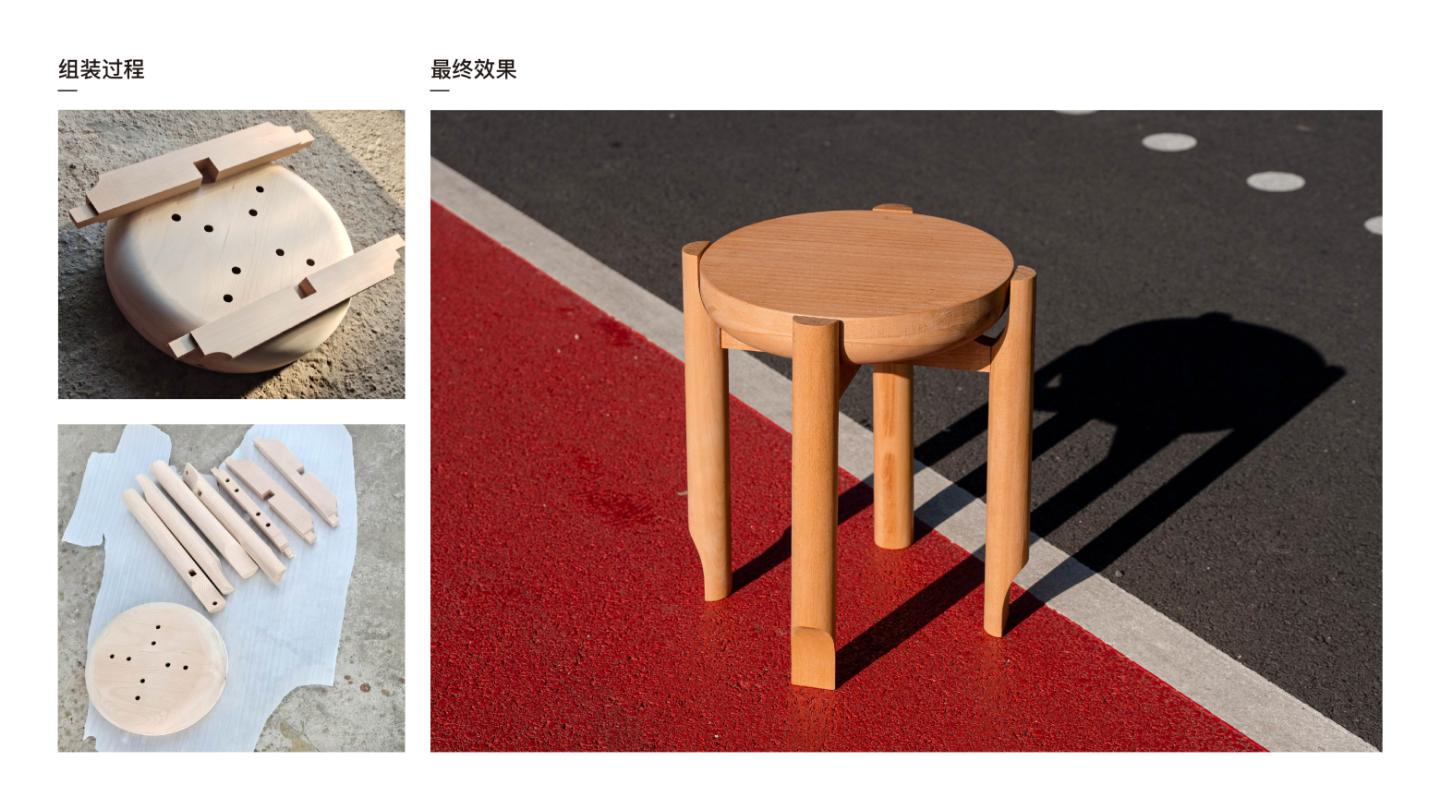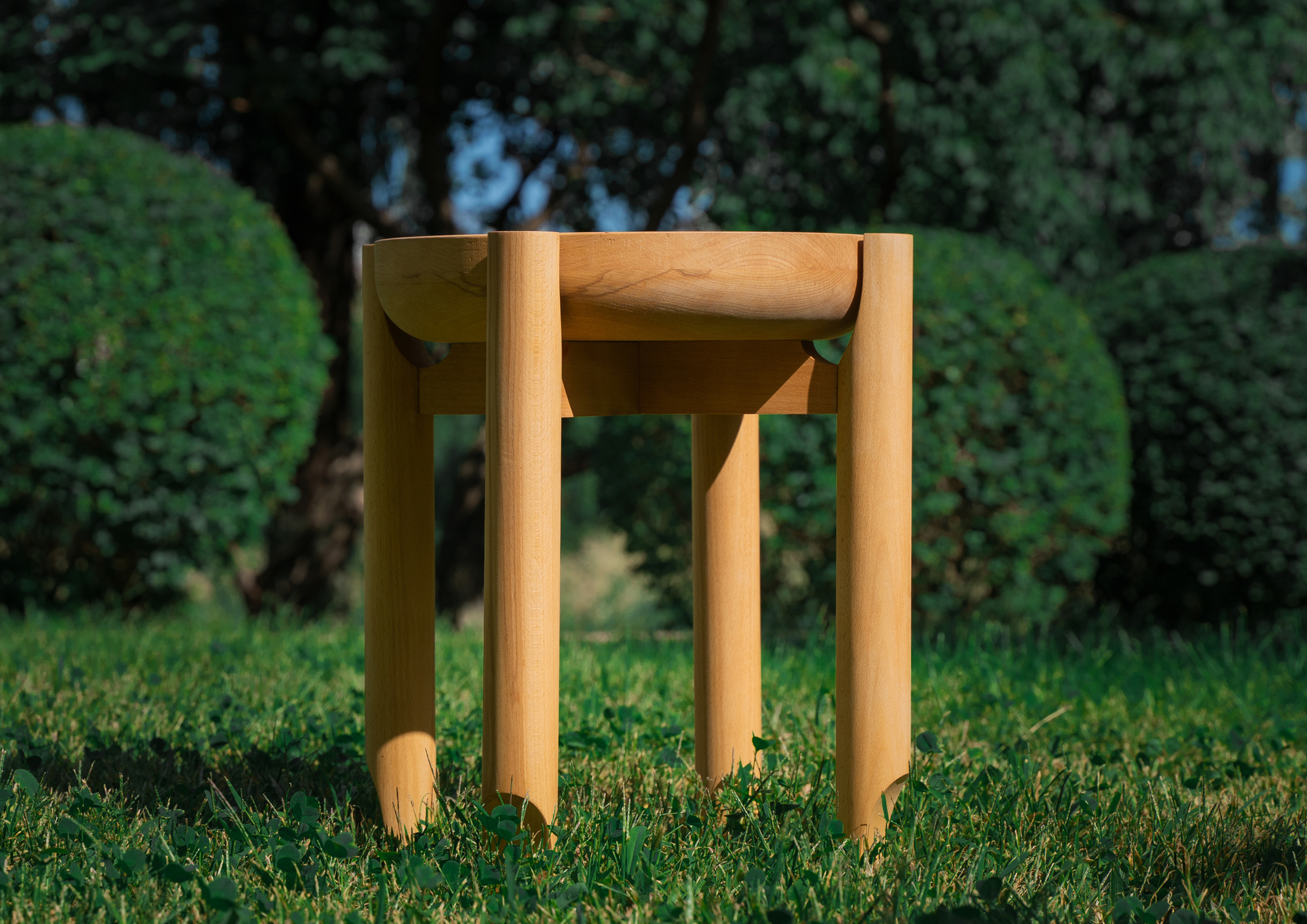Ballet Stool-PPT

Ballet Stool-1

Ballet Stool-2
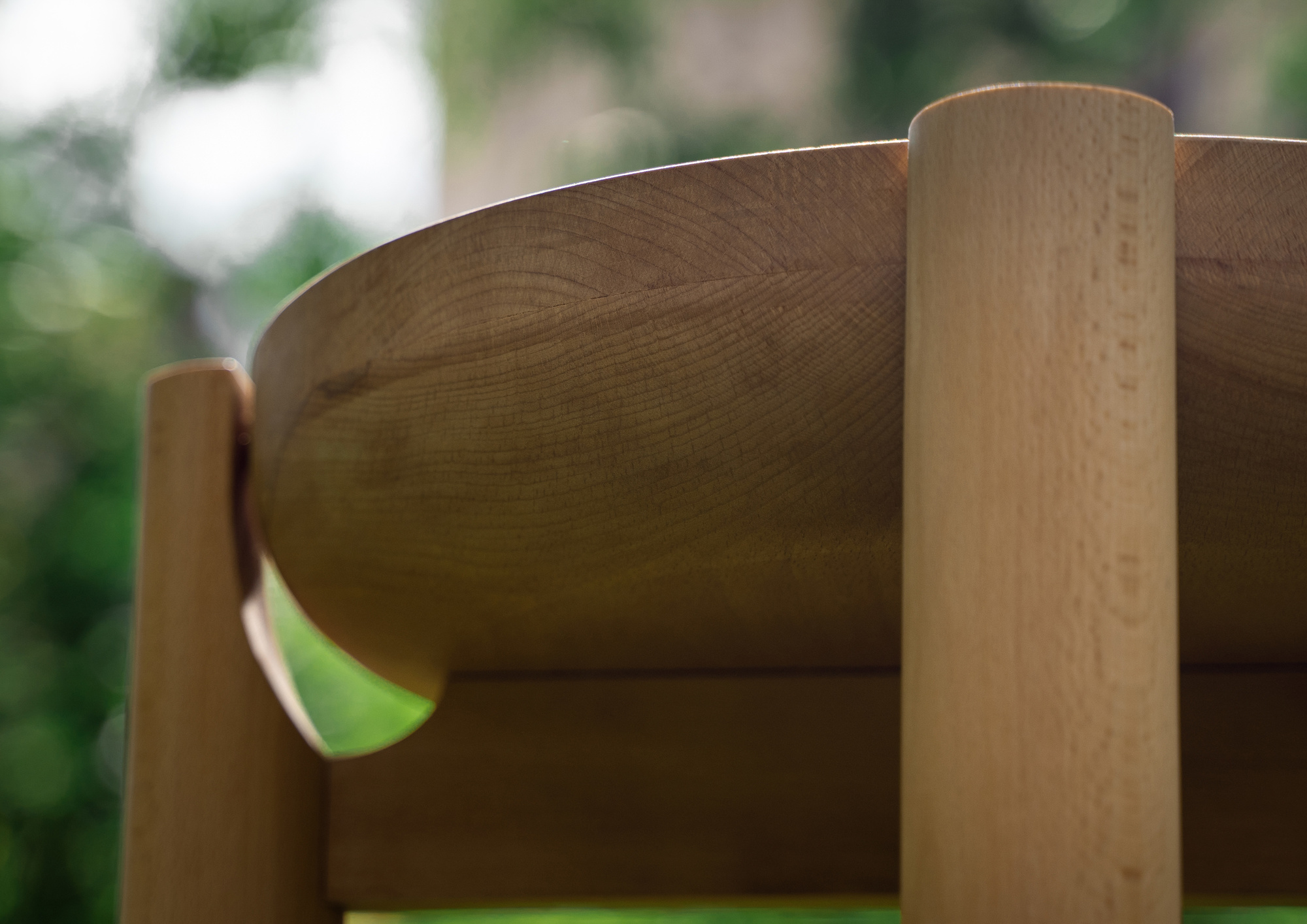
Ballet Stool-3
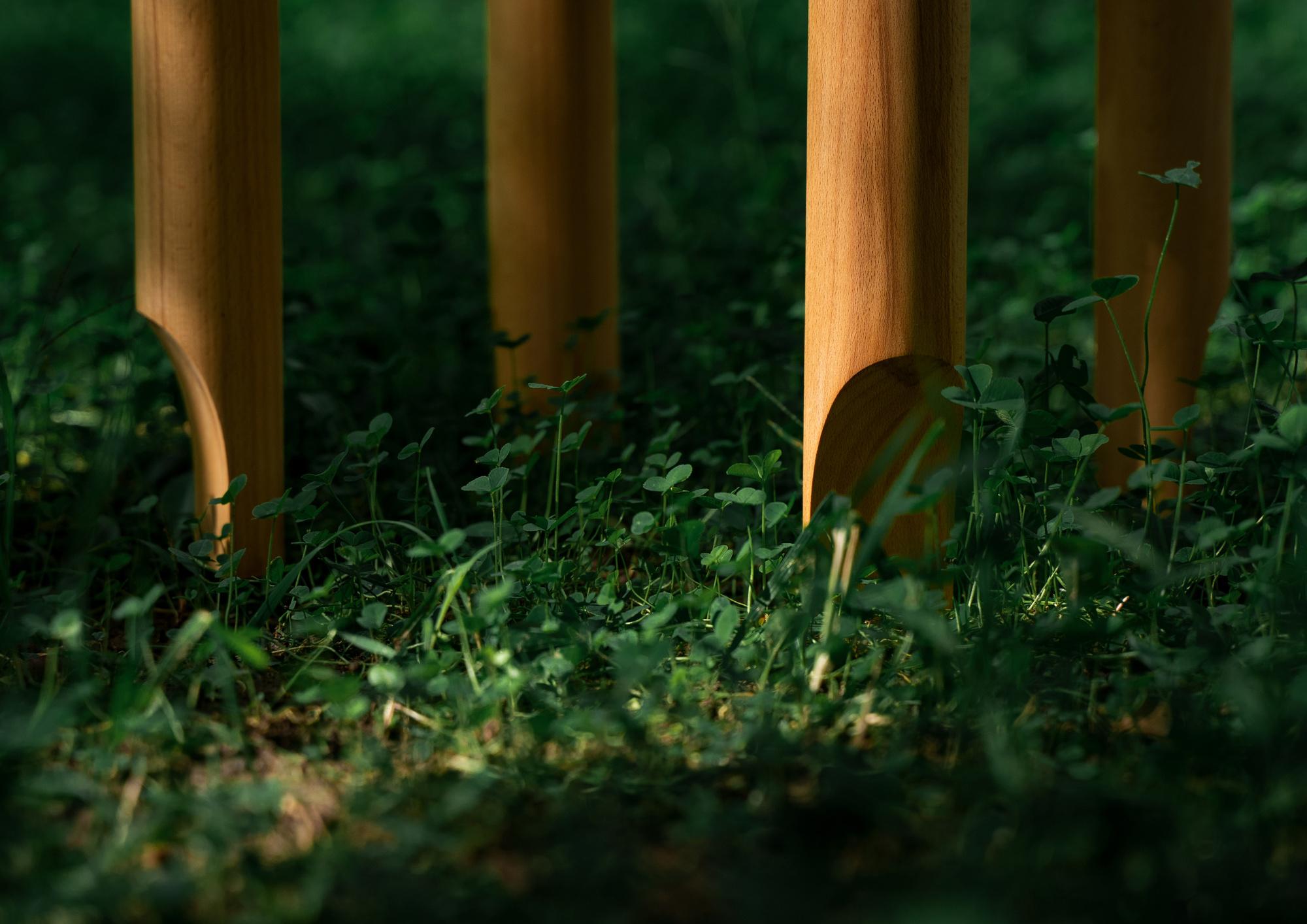
Ballet Stool-4
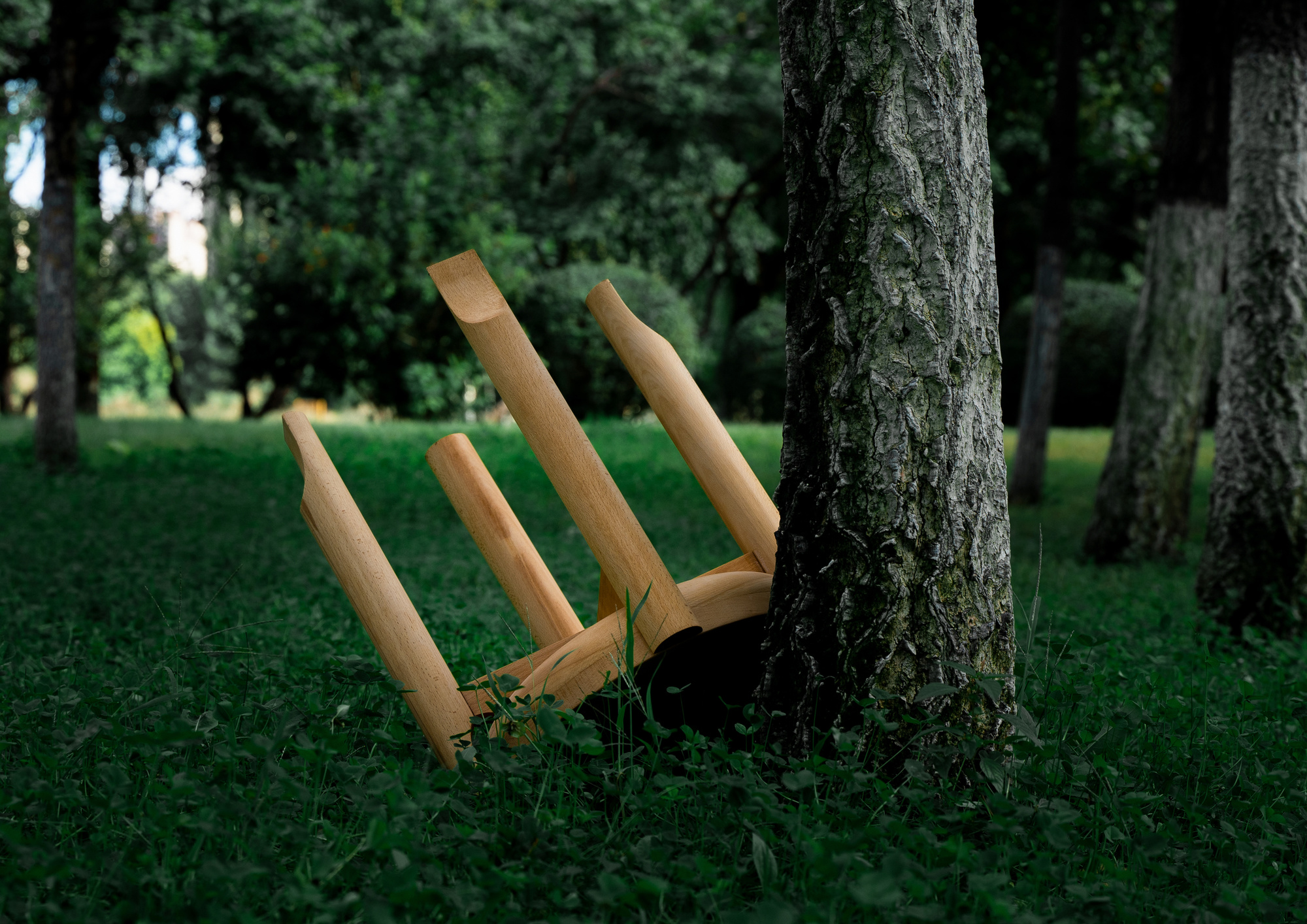
Ballet Stool-5
The ballet stools are all made of recycled old beech wood furniture, connected by mortise and tenon joints. The design is inspired by old furniture that is no longer used. Although these furniture are no longer functional, they often retain a considerable amount of intact materials and have considerable potential for reuse. Through numerical control programming, a few damaged parts of the old wood are cut off, and the rest of the intact parts are redesigned through simple shape modification to make it continue to play a supporting function. This approach allows things that were once lost to reappear in a new form to the user.
The redesigned shape naturally forms a unique design language; the cutouts at the top and bottom of the stool legs resemble the elegant posture of a ballet dancer, capturing the beauty of dynamics even in static, further emphasizing its sculptural quality. As an exploration of the reuse of waste furniture, the ballet stool puts forward a reasonable solution, and pays attention to the challenges of environmental protection and sustainable manufacturing in the future, which has certain economic value.
Based on my focus on sustainable design, my creative practice focuses on the reuse of waste furniture and the recycling value of materials. Through the redesign of waste beech furniture, I explore the regeneration potential of the material after functional degradation. Taking the ballet stool as an example, the work removes the damaged part of the wood through CNC programming, and uses the mortise and tenon structure for no glue and nail splicing to ensure the structural stability and meet the environmental protection requirements. In the design process, the unique cut of the stool leg is inspired by the dynamic beauty of the ballet dancer dancing on tiptoe, which is natural, and also emphasizes the sculptural attribute of the product in the static state.
In addition, the mortise and tenon joint structure is also an important part of traditional Chinese woodworking technology, which has a long history and reflects the balance between structure and aesthetics of oriental design. In addition, China is facing the problem of furniture consumption and waste in the process of rapid urbanization. How to realize the sustainable use of resources in the process of consumption upgrading is an important social issue. Through the systematic redesign of waste furniture, the ballet stool extends the life cycle of materials and provides a reasonable solution for environmental protection and sustainable production in China and the world. The concept proposed in the work also echoes the values of "making the best use of things" and "recycling" in traditional Chinese culture, and brings new thinking and possibilities for the future society in green manufacturing and environmental protection.
Wang Zihua is currently studying at the Bremen Institute of Art in Germany, majoring in integrated design, studying and researching in the field of speculative design and furniture design. As a designer's mission and vision is to provide orderly solutions to the emerging new needs in the complex social development, based on the thinking of the future lifestyle, combining theory and technology. The work emphasizes the harmony and unity of "product-user-environment", and explores more opportunities and possibilities for sustainable design in future life.
